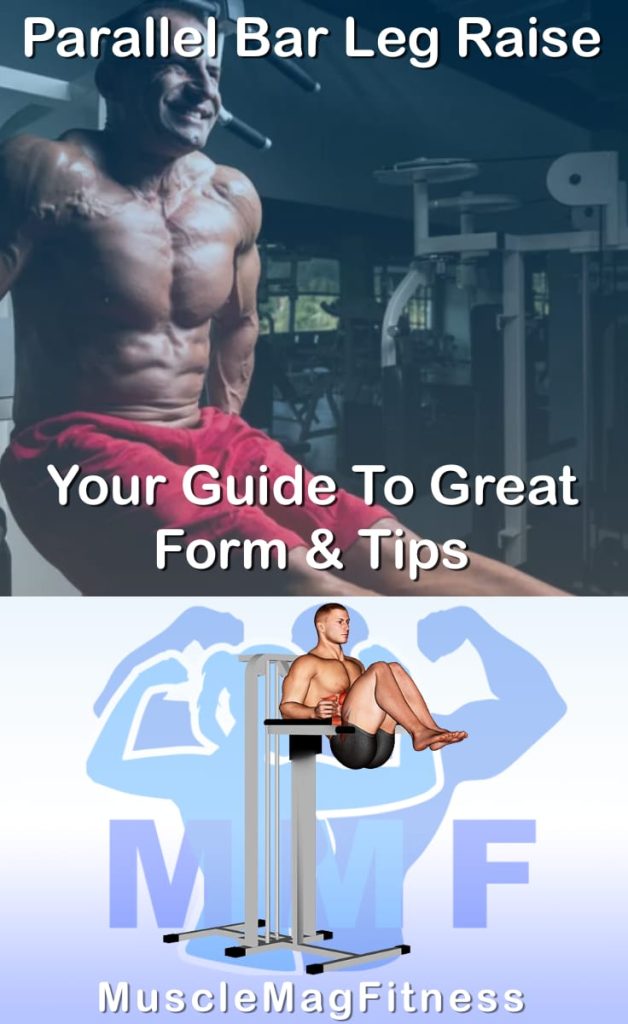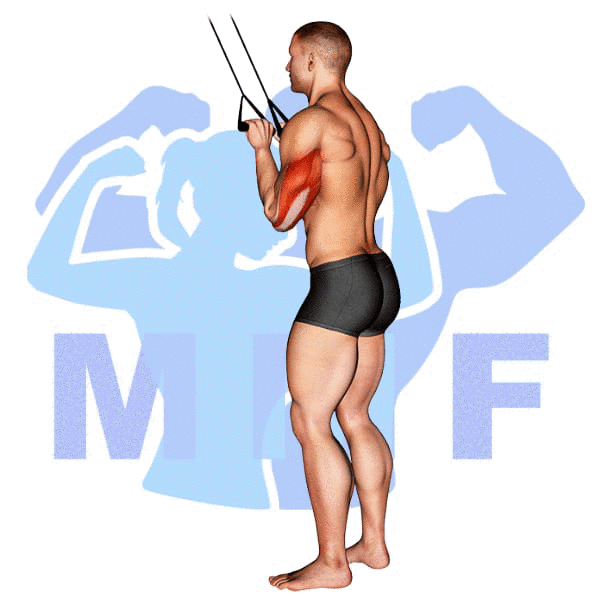Do you find it challenging to perform parallel bar leg raises? Do you struggle to keep your legs straight while raising them up? Don’t worry, you’re not alone. Many people experience difficulty when trying to execute this exercise. One common cause of this problem is a lack of core strength. If your core muscles are not strong enough to support your legs, it becomes difficult to lift them straight up. But fret not, in this blog post, we will share tips and techniques to help you improve your parallel bar leg raises and conquer this exercise once and for all.
Parallel Bar Leg Raise Summary
- Primary Muscles: Rectus Abdominis
- Secondary Muscles: Adductor Brevis, Adductor Longus, Iliopsoas (Psoas Major & Iliacus), Obliques, Pectineus, Rectus Femoris, Sartorius, and Tensor Fasciae Latae
- Equipment: Dip Stand
- Mechanics Type: Compound
- Force: Pull
- Utility: Basic

Parallel Bar Leg Raise Instructions
- Get started by lifting yourself up onto a parallel bar stand so that your legs are straight and your feet are not touching the ground.
- Next, pull your knees up to your chest, using your abs.
- After a brief pause with your core contracted, lower your legs back to straight.
- Repeat your Parallel Bar Leg Raise for 8-20 reps.
Video Tutorial
Parallel Bar Leg Raise Muscles
Target (Agonist)
Synergists
- Adductor Brevis
- Adductor Longus
- Iliopsoas (Psoas Major & Iliacus)
- Obliques
- Pectineus
- Rectus Femoris
- Sartorius
- Tensor Fasciae Latae
Dynamic Stabilizers
- Rectus Femoris
Stabilizers
- Deltoid – Anterior
- Pectoralis Major – Clavicular
- Wrist Flexors
Antagonist Stabilizers
- None
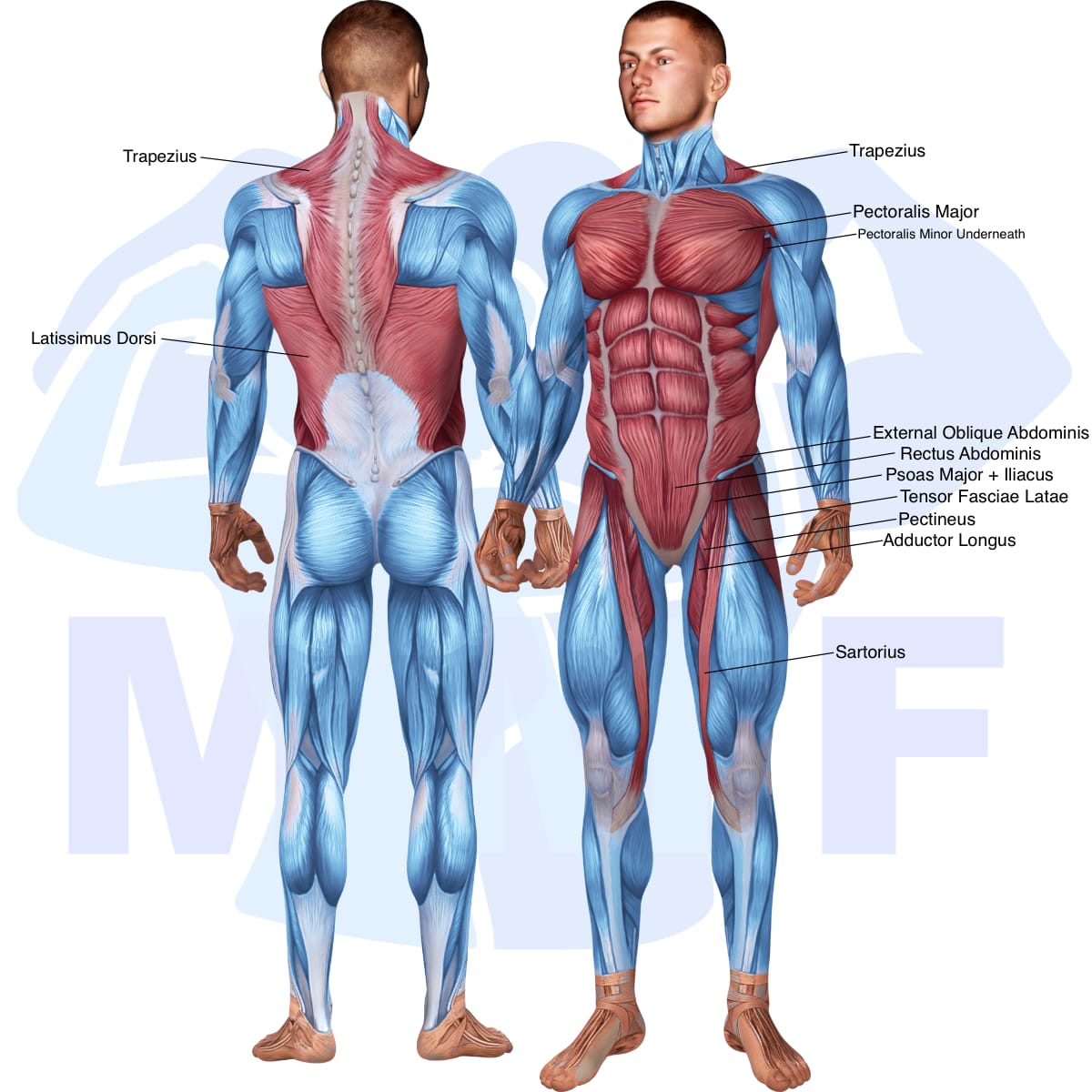
Benefits of Parallel Bar Leg Raise
The Parallel Bar Leg Raise is an excellent exercise for strengthening the Rectus Abdominis, one of the main muscles in the abdominal region. This exercise works to strengthen the abdominal muscles by engaging them as you raise and lower your legs while suspended between two bars. By engaging the entire abdominal region, this exercise can help to create a stronger core and improve overall core stability. Additionally, the Parallel Bar Leg Raise can help to improve posture, balance, and coordination. As the Rectus Abdominis is one of the main muscles used during this exercise, it will become stronger and more toned with regular practice. This can result in improved posture and a flatter stomach.
Tips for Performing Parallel Bar Leg Raise
Your at the right place if you’re motivated to enhance your parallel bar leg raise execution. Using these suggestions can enable you to take full advantage of this amazing workout. Concurrently with building your abs muscles, increasing movability, and also a reduced chance of injury can all be accomplished with this exercise. It is time to begin and take a look at how these suggestions will benefit you.
- Make sure your back and core are strong before attempting the Parallel Bar Leg Raise – this will help you keep your balance and prevent straining your back muscles. The benefit of having a strong back and core is that it will make the exercise much easier to perform correctly.
- Keep your feet together throughout the exercise – this will help you maintain proper form and prevent any injuries. The benefit of keeping your feet together is that it will engage more muscles and make the exercise more effective.
- Don’t forget to breath – it’s easy to forget to take a deep breath during a challenging exercise like the Parallel Bar Leg Raise, but making sure to take deep breaths throughout the movement will help you stay focused and energized. The benefit of breathing properly is that it will help you get more out of the exercise, and make it more enjoyable.
Benefits and Tips Video
Frequent Mistakes To Avoid
Avoiding common mistakes can mean the distinction between a successful training session and a painful injury when executing parallel bar leg raise. Additionally, getting optimal results from this exercise requires proper form, and avoiding perform common mistakes can help you to perform the exercise better and obtain your desired results. However, take it easy, it’s not as challenging as it might seem. By knowing the mistakes to avert and taking the appropriate actions, you may complete the exercise securely and effectively. So it is time for you to maximize your results from this exercise and enjoy the benefits of a successful workout.
- Not engaging the core: Not engaging the core muscles during the exercise can lead to an inefficient workout and can put strain on other muscles that are not meant to do the work.
- Not raising the legs high enough: Not raising the legs high enough can limit the range of motion and lead to a less effective workout.
- Bouncing off the bars: Bouncing off the bars can increase the risk of injury, as it can cause too much strain on the lower back muscles and reduce stability in the exercise.
Find More Bodyweight Exercises Here
Variations and Complementary Exercises
If you’re looking to mix up your routine, there are a few other exercises that can help you work similar muscles as the Parallel Bar Leg Raise. Here are some variations, complementary, and alternative exercises that you can try:
Otis Up
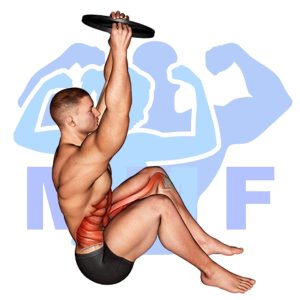
Otis Up is a great alternative or complementary exercise to the Parallel Bar Leg Raise. It works the same muscles, but also engages the core and upper body to stabilize the body while performing the exercise. Otis Up works by suspending the body in a seated position, while pulling up with the arms and legs simultaneously. This puts more emphasis on the abdominals, making it a great way to target those hard-to-reach core muscles. It is also a great way to build strength, balance, and stability in the lower body. It can also be modified for people of all fitness levels, making it a great exercise for anyone looking to increase their overall strength.
Lying Leg Lift Hold
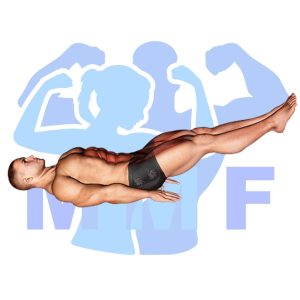
The lying leg lift hold is a great complementary or alternative exercise for the parallel bar leg raise. It is an excellent way to work the hip flexor and abdominal muscles while also targeting the lower body. The lying leg lift hold requires you to lie on your back with your legs straight, then lift your legs up until they are parallel to the floor. You should hold this position for 10 to 15 seconds before lowering your legs back to the starting position. This exercise can be modified by adding a weight to make it more challenging. The lying leg lift hold is a great alternative to the parallel bar leg raise because it does not require any equipment, and it can be done anywhere.
Lying Leg Crunch
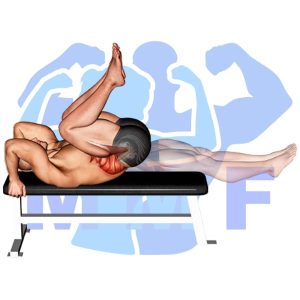
The lying leg crunch is an excellent complementary or alternative exercise for the parallel bar leg raise. It targets the same muscle group, namely the rectus abdominis, and is performed in a similar manner. However, while the parallel bar leg raise requires you to hold your body weight up with your arms, the lying leg crunch requires you to keep your feet planted on the ground and your hands behind your head. This variation allows you to focus on engaging the core muscles more and increases the range of motion. Furthermore, if you have lower back pain, this exercise is a great option as it helps to reduce strain on the lower back while still providing an effective abdominal workout.
Check Out These Top Bodyweight Exercises
Lying Knee Raise
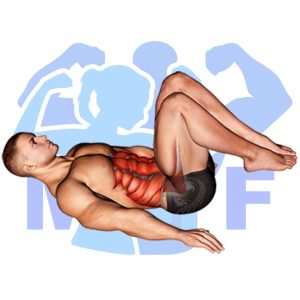
The Lying Knee Raise is a great complementary or alternative exercise to the Parallel Bar Leg Raise. It can be done at home, and only requires an exercise mat and a flat surface. To perform the exercise, lie on your back with your legs bent and your feet flat on the floor. Then, raise your knees to your chest while keeping your lower back pressed against the floor. This exercise primarily works the hip flexors, which can help to strengthen the muscles that are used in the Parallel Bar Leg Raise. The Lying Knee Raise is a great way to add variety to a workout routine and help build strength in the lower body.
Lever Seated Leg Raise Crunch (Machine)
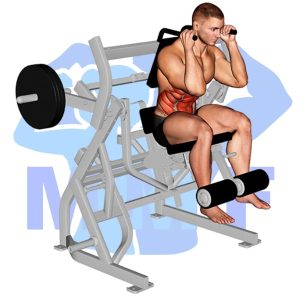
The Lever Seated Leg Raise Crunch machine is an excellent complementary or alternative exercise to the Parallel Bar Leg Raise. This machine isolates the abdominal muscles and provides a more controlled and stabilized movement. It is also a great option for those who are unable to perform the Parallel Bar Leg Raise due to lack of upper body strength or balance. The Lever Seated Leg Raise Crunch machine allows the user to adjust the difficulty level by changing the weight stack, making it suitable for all levels of fitness. Additionally, this machine allows for a full range of motion and can be used to target both the lower and upper abdominal muscles.
Lever Seated Crunch (Machine)
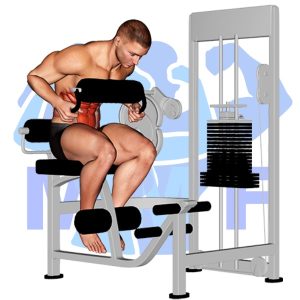
The Lever Seated Crunch (Machine) is an excellent alternative or complementary exercise for the Parallel Bar Leg Raise. It targets the same abdominal muscles, but offers the additional benefit of being adjustable to a variety of height levels. This allows for a more comfortable range of motion and the ability to challenge the abdominal muscles in different ways. Additionally, the machine ensures proper form throughout each repetition, helping to reduce the risk of injury.
Find More Abs Exercises Here
Opposing Complementary Exercises
These exercises are designed to not only help you get the most out of the Parallel Bar Leg Raise, but also to work opposing muscle groups to ensure a balanced and comprehensive workout. By doing these exercises you will be able to maximize the benefits of the Parallel Bar Leg Raise and strengthen your whole body. Here are some exercises that complement the Parallel Bar Leg Raise:
Barbell Good Morning
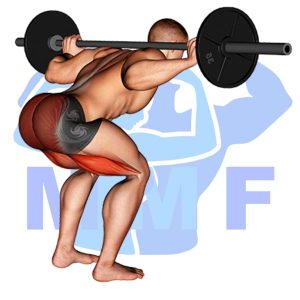
The Barbell Good Morning is an effective complement to the Parallel Bar Leg Raise. This exercise targets the posterior chain muscles of the lower back, glutes, and hamstrings, working in opposition to the primary muscles worked during the Parallel Bar Leg Raise, which are the hip flexors and abdominal muscles. The Barbell Good Morning can help build strength in the lower back, glutes, and hamstrings, while also working to improve flexibility in the hip flexors and abdominal muscles. It is a great exercise to include as part of a comprehensive lower body workout routine.
Good Mornings With Bands

Good Mornings With Bands is an excellent complementary exercise to the Parallel Bar Leg Raise. This exercise targets the same muscle group but in an opposing motion, which helps to promote balance and prevent injury. Good Mornings With Bands works the back muscles, specifically the erector spinae, and helps to strengthen them. This exercise also works the hamstrings and glutes while strengthening the core. This helps to create a strong foundation for the Parallel Bar Leg Raise and other exercises that require balance and stability. Good Mornings With Bands is a great way to improve overall performance and prevent injury.
Smith Machine Good Morning Off Pins
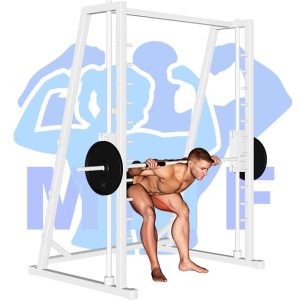
The Smith Machine Good Morning Off Pins is a great complementary exercise to the Parallel Bar Leg Raise. This exercise works the opposing muscle group, targeting the hamstrings, glutes and lower back. The Smith Machine Good Morning Off Pins allows you to slowly lower your body while keeping your back straight and engaged. This exercise is great for working on balance, stability and strength while targeting the posterior chain. By doing this exercise in conjunction with the Parallel Bar Leg Raise, you are able to work the opposing muscle group and build a strong and balanced lower body.
Level Up Your Leg Game
If you’re looking to take your leg strength to the next level, then leg raises on the parallel bars are a great option to incorporate into your fitness routine. This exercise targets your hip flexors, lower abs, and quads, providing a high level of challenge for your core and leg muscles. By adding parallel bar leg raises to your repertoire, you can improve your overall balance and stability, and increase your overall lower body strength. However, it’s important to start with proper form and technique to avoid any injuries or unnecessary strain on your body.
References: Wikipedia | ExRx.net | PubMed.gov | Comprehensive List of Abs Bodyweight Exercises
